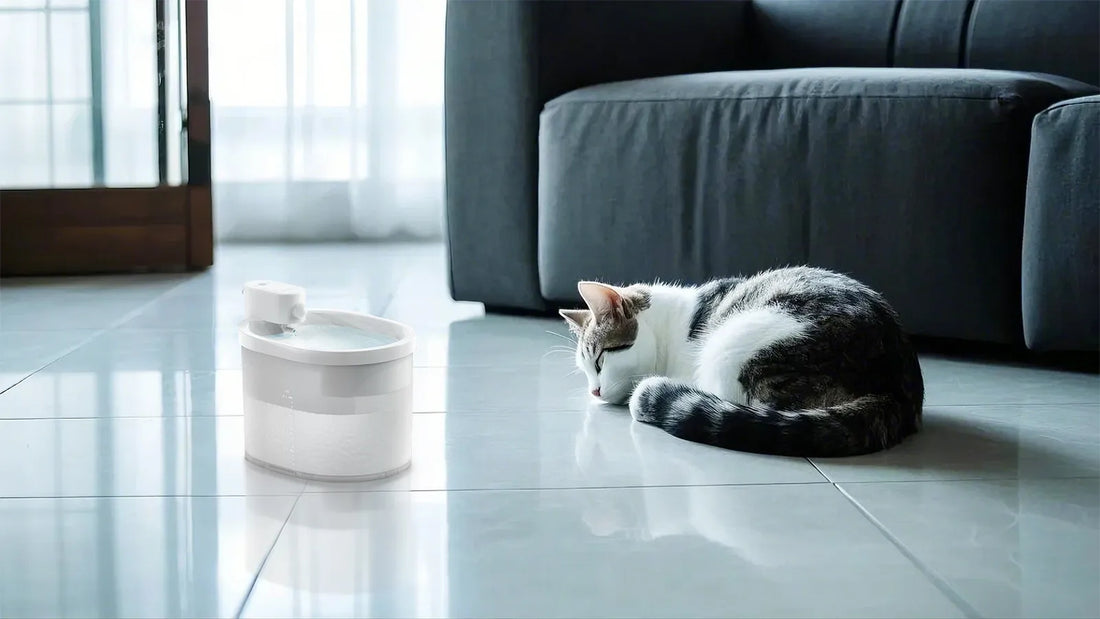When it comes to caring for your cat, every detail matters, including the bowl they eat and drink from. The right bowl can make a significant difference in your cat's health, comfort, and overall well-being. But with so many options available, how do you know what kind of bowl is best for your feline friend? This article will guide you through the essential factors to consider when choosing the perfect bowl for your cat.
Material Matters
The material of the bowl is one of the most critical factors to consider. Different materials offer various benefits and drawbacks, so it's essential to choose one that suits your cat's needs.
Stainless Steel
Stainless steel bowls are a popular choice for many cat owners. They are durable, easy to clean, and resistant to bacteria. Unlike plastic bowls, stainless steel doesn't harbor bacteria in scratches or cracks, making it a hygienic option. Additionally, stainless steel bowls are less likely to cause allergic reactions in cats, which can sometimes occur with plastic bowls.
Ceramic
Ceramic bowls are another excellent option. They are heavy, which means they are less likely to tip over, and they come in various designs and colors. However, it's crucial to ensure that the ceramic bowl is lead-free and has a smooth glaze to prevent bacteria from accumulating in tiny pores. Ceramic bowls can be more fragile than stainless steel, so handle them with care.
Plastic
Plastic bowls are lightweight and inexpensive, but they are not the best choice for long-term use. Plastic can harbor bacteria in scratches, and some cats may develop allergies or acne from prolonged use. If you choose a plastic bowl, make sure it is BPA-free and replace it regularly to maintain hygiene.
Size and Shape
The size and shape of the bowl are also important considerations. The bowl should be large enough to hold an adequate amount of food or water but not so large that it becomes cumbersome for your cat to use.
Food Bowls
For food bowls, choose a size that accommodates your cat's portion size without being too deep or too shallow. A shallow bowl is often better for cats, as it allows them to eat comfortably without their whiskers touching the sides, which can cause discomfort.
Water Bowls
Water bowls should be wide enough to hold a sufficient amount of water, especially if you have multiple cats. Some cats prefer running water, so you might consider a water fountain designed for pets. These fountains can encourage your cat to drink more water, which is essential for their health.
Design and Features
The design of the bowl can also impact your cat's eating experience. Here are some features to look for:
Non-Slip Base
A non-slip base is essential to prevent the bowl from sliding around while your cat is eating or drinking. This feature is particularly important for energetic or playful cats who might knock their bowl over.
Elevated Bowls
Elevated bowls are designed to raise the food or water to a more comfortable height for your cat. This can be especially beneficial for older cats or those with arthritis, as it reduces the strain on their neck and joints.
Double Bowls
Double bowls are convenient for serving both food and water in one unit. They are ideal for saving space and keeping your cat's feeding area organized. However, make sure the compartments are adequately separated to prevent food from contaminating the water.
Hygiene and Maintenance
Maintaining a clean bowl is crucial for your cat's health. Bacteria can quickly build up in dirty bowls, leading to potential health issues. Here are some tips for keeping your cat's bowl clean:
Daily Cleaning
Wash your cat's bowl with hot, soapy water daily. This will help remove any food residue or bacteria that may have accumulated. Rinse the bowl thoroughly to ensure no soap residue remains.
Weekly Deep Cleaning
In addition to daily cleaning, perform a weekly deep clean by soaking the bowl in a mixture of water and vinegar. This will help remove any stubborn stains or bacteria. Rinse the bowl thoroughly before using it again.
Regular Replacement
Even with proper cleaning, bowls can wear out over time. Inspect your cat's bowl regularly for signs of wear, such as scratches or cracks, and replace it as needed to maintain hygiene.
Special Considerations
Every cat is unique, and some may have specific needs that require special consideration when choosing a bowl.
Allergies and Sensitivities
If your cat has allergies or sensitivities, avoid plastic bowls, as they can cause skin reactions. Opt for stainless steel or ceramic bowls instead.
Senior Cats
Senior cats may benefit from elevated bowls, which reduce the strain on their neck and joints. Additionally, ensure the bowl is easy to access and doesn't require your cat to bend too much.
Multiple Cats
If you have multiple cats, consider providing separate bowls for each cat to prevent competition and ensure that each cat has access to food and water. You might also consider a larger water bowl or a water fountain to accommodate multiple cats.
Choosing the right bowl for your cat is more than just a matter of convenience—it's about ensuring their health, comfort, and happiness. By considering factors like material, size, design, and hygiene, you can find the perfect bowl that meets your cat's needs. Remember, a well-chosen bowl can make mealtime a more enjoyable experience for your feline friend, contributing to their overall well-being. So, take the time to select the best bowl for your cat, and you'll both reap the benefits.













